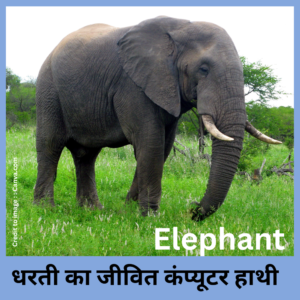The Amazon River is known as the second-longest river in the world.Flows over 6,400 kilometers through South America. The Amazon rivers is nourishing the planet’s largest tropical rainforest of Amazon . More than just a geographical marvel, the Amazon River is a vital force in regulating the global climate, supporting biodiversity, sustaining agriculture, and aiding sustainable development. This article explores the Amazon River’s ecological, scientific, and agricultural significance with supporting data and frequently asked questions.
Introduction: Why the Amazon River Matters
The Amazon River is not just a river; it is the heart of the Amazon Rainforest, often called the “lungs of the Earth.” With a water discharge greater than the next seven largest rivers combined, the Amazon River plays a central role in maintaining the planet’s freshwater cycle, carbon balance, and biodiversity networks.
Geographical Overview of the Amazon River
Length: ~6,400 km (approx.)
Amazon Rivers Discharge Volume: More than or approximately 209,000 m³/s (largest in the world)
Basin Area: ~7 million sq. km
Countries Covered: Brazil, Peru, Colombia, and 6 others
Tributaries: Over 1,100 including the Rio Negro, Madeira, and Purus
Amazon River and Climate Regulation
How the River Regulates Global Climate
The Amazon Basin releases massive amounts of water vapor and stores immense quantities of carbon dioxide, helping stabilize global temperatures and rainfall.
Table 1: Amazon River’s Role in Climate Regulation
| Parameter | Value | Source |
| Annual CO₂ Absorption | ~0.5 billion tons | NASA / IPCC |
| Water Vapor Released Daily | ~20 billion tons | NOAA |
| Contribution to Global Rainfall | ~20% of Earth’s total precipitation | World Meteorological Organization |
| Global Carbon Stock (Amazon Basin) parameters | Approximately 150-200 billion tons | United Nations Environment Programme – UNEP |
Biodiversity of the Amazon River Ecosystem
The Amazon River: A Hotspot of Life
The river and its surrounding basin house more than 3 million species, making it one of the most biodiverse regions in the world.
Table 2: Amazon River Biodiversity Statistics
| Species Category | Number of Species | Notable Examples |
| Fish | Over 2,500 | Piranhas, Arapaima, Electric Eel |
| Mammals | 430+ | Amazon River Dolphin, Jaguar |
| Birds | 1,300+ | Macaws, Harpy Eagle |
| Amphibians & Reptiles category | Species more than 500 or 500+ | Important for Anacondas, Poison Dart Frogs |
| Plants | 40,000+ | Rubber Tree, Brazil Nut Tree |
Note: Many species are still undocumented and may go extinct due to climate threats.
Amazon River and Forest Conservation
Amazon River supports over 60% of the Rainforest of Amazon by nourishing vegetation and enabling seed dispersal. Deforestation disrupts this flow, threatening both regional and global ecosystems.
Table 3: Forest and River Interdependency
| Factor | Value | Impact |
| River-Dependent Forest Area | ~4.2 million sq. km | Maintains humidity & rainfall |
| % Forest Area Impacted by Dams | ~18% (projected by 2030) | Threatens natural water cycles |
| Forest Loss Since 2000 | ~17% of total Amazon forest | Reduces carbon capture ability |
Amazon River and Agriculture
The nutrient-rich floodplains of the Amazon (Várzea lands) are ideal for growing crops like bananas, maize, cassava, and cocoa.
Table 4: Agricultural Benefits of the River
| Crop Type | Cultivated Area (hectares) | Dependency on River Flood Cycle | Key Benefit |
| Bananas | 450,000+ | High | Natural irrigation and nutrients |
| Cassava | 800,000+ | Medium | All-season support |
| Cocoa | 400,000+ | Medium | Rich silt enhances productivity |
| Rubber | 250,000+ | Medium | Rainforest microclimate support |
Sustainability and the Amazon River
The Amazon River offers natural solutions for climate resilience, clean energy (via hydropower), sustainable fishing, and eco-tourism. However, unchecked mining, dam construction, and deforestation threaten these benefits.
How to Protect It?
Promoting sustainable land use
Banning illegal logging
Supporting indigenous communities
Global climate pacts to conserve the basin
Summary
The River is one of Earth’s most critical natural systems. It supports over 30 million people, regulates the climate, sustains diverse wildlife, and offers vital agricultural and ecological services. Protecting it is not a regional responsibility but a global imperative for a sustainable future.
FAQs: Amazon River
Q1. Is the Amazon River the longest river in the world or Nile River is longest river in the world ?
While once thought to be second to the Nile, some measurements suggest the Amazon may be longer, depending on the source of its tributaries.
Q2. How does the Amazon River impact the global climate?
Through carbon absorption, water vapor release, and influencing rainfall patterns, it stabilizes global temperatures and weather.
Q3. What are the major challenges or threats to the Amazon River?
Deforestation, climate change, dam construction, mining, and illegal activities are top threats.
Q4. What animals are found in the Amazon River?
Species like the pink river dolphin, piranha, electric eel, and giant otters are native to the river system.
Q5. How does the Amazon River benefit agriculture?
It provides fertile floodplains, irrigation support, and natural nutrients to support crop growth.
References
- NASA Earth Observatory – https://earthobservatory.nasa.gov
- World Wildlife Fund (WWF) – https://www.worldwildlife.org/places/amazon
- United Nations Environment Programme (UNEP) – https://www.unep.org
- NOAA Climate Research Division – https://www.noaa.gov
- IPCC Special Reports on Climate and Land Use – https://www.ipcc.ch
- FAO – Food and Agriculture Organization of the UN – https://www.fao.org
PRAKRITI DARSHAN-NATURE AND ENVIRONMENT MAGAZINE
Prakriti Darshan is a leading Hindi-language magazine and digital platform dedicated to raising public awareness on vital issues related to nature, biodiversity, climate change, sustainable development, and environmental conservation. This magazine represents a unique blend of science, society, and sensitivity—offering a common platform for researchers, students, NGOs, policymakers, nature lovers, and conscious citizens alike.
With thought-provoking articles, inspiring stories, environmental research, impactful projects, and policy perspectives, Prakriti Darshan is a transformative journey toward a greener and more sustainable future.
Let us come together to protect and preserve our planet for generations to come. 🌿🌍
Join us in our mission to protect and celebrate the planet. 🌏💚
Click for more information
- Visit www.prakritidarshan.com for Free Magazine ,Free membership benefits ,offered price magazine @ Rs.1 or Rs.11 only and more ……
- 🎗️Sponsor Prakriti Darshan Magazine – Support our environment mission.
- 📚 Explore the Environment Magazine – Read our latest and past issues.
- ✍️ Read Editor’s Article or Blog – Insightful thoughts from our editorial desk.
- 🌱 Join Membership – Be part of India’s leading green community.
- 🤝 Become an NGO Impact Story Partner – Share your grassroots impact nationwide.
- 🏢 Become a Company Partner – Showcase your CSR, ESG, or sustainability work.
- 👤 Become an Individual Partner – Volunteer, write, and raise your green voice.
- 📢 Advertise with Us – Reach eco-conscious readers across India.
- Eco Trails Newsletter
- Donate for “Hari Ho Vashundhara & Har school Hariyali “ Plantation campaign Associated Partner NGO :GDSS NGO www.gdssngo.org
BALA DATT SHARMA,
MANAGING EDITOR ,
PRAKRITI DARSHAN-NATURE AND ENVIRONMENT MAGAZINE
- Yamuna River- Lifeline of North India :A Scientific, Agricultural, and Environmental Perspective - July 14, 2025
- Jurassic World Rebirth Breaks Box Office Records : Global Box Office Revenue $1.5 Billion (And rising) Globally with a Roaring Environmental Message - July 14, 2025
- African Elephant: Facts, Types, Scientific Data, and Why Their Survival Matters for Our Planet - July 13, 2025









